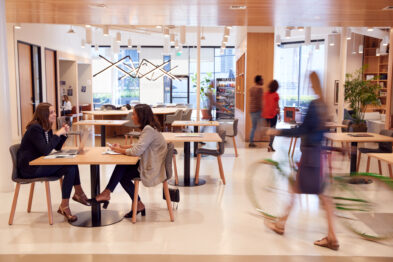In the cover story of BOMA’s November/December issue of their digital magazine, Love Will Keep Us Together: Keeping Tenants Happy, John Salustri, editor-in-chief of Salustri Content Solutions, uses insights from CRE thought leaders to explore why tenant retention is so vital, the evolving expectations of tenants in an increasingly consumerized workplace, and the role that building technology plays in keeping up with tenant demands in order to keep them happy.
A dissatisfied tenant is bad for everyone. It means higher demands on already over-extended property teams, lower quarterly earnings, future asset value decrease, and a significantly increased risk of the worst-case scenario: non-renewed leases. As our own CEO Michael Wong says in the article, “Finding a new tenant costs four to five times more than keeping an old one.” Keeping tenants happy is key.
Tenant satisfaction isn’t a new topic of conversation in the industry — it has always been of watershed importance. But over the past several years, tenant baseline expectations have evolved with an increasingly individualistic, convenience-driven culture, and buildings are facing the new challenge of keeping up with these expectations.
What’s Driving Tenant Expectation Changes?
An article sidebar called A New Age of Demand, zooms in on how the workplace is becoming increasingly consumerized, and how the changing tenant expectations are making retention more challenging than ever before. Michael Wong cites an increasingly tight labor market as a primary driver of new demands. “One of the biggest [factors] is the fight for talent. Corporate tenants are fighting for talent in an increasingly tight labor market, where unemployment is in the low single digits, and it has become a top priority to create a work environment that draws the right people.”
This sort of attractive work environment that tenants seek to offer their employees includes everything from convenient amenities (like Amazon Lockers and dry-cleaning services), to buildings customized for varied work hours (e.g. easy-access to overtime HVAC services), to concierge services.
Becoming a building that meets these evolving demands can seem daunting, especially since property teams are already working so hard to keep their current tenants satisfied. In the article, Michael Wong describes the CRE property management industry as a “reactive” one, in which building teams don’t have the bandwidth to get ahead of issues, let alone prioritize the implementation of new amenities. Says Wong, “They’re in a constant state of putting out fires. Everyone understands what the goal is, but, when the rubber meets the road, there isn’t enough time in a day or enough staff to do it all, and a lot of well-intentioned proactivity never happens.”
Adding fuel to the fire, building ownership (eager to increase profit margins) tends to under-value the role that property teams play in keeping tenants happy. Says Wong, “They see the real money being made on the transaction side, while the contributions of management and operations are much subtler. As a result, they’re easily undervalued and seen as a commodity. You can lay off people and cut fees to increase margins, but then you cut service. It becomes a downward spiral.”
Prevent a Downward Spiral With the Right Building Technology
At first glance it might seem impossible to find solutions that satisfy increasing tenant demands, reduces the workload of property teams, and benefits ownership’s bottom line — but the right, practical technologies are proving to make a significant impact.
One example of technology meeting these seemingly competing demands is using overtime HVAC management software to take your building “on-demand”. Going on-demand means only running the building’s HVAC equipment when it’s needed — and only for the tenants that need it. Due to lease language, many buildings run as if at full-capacity on weekends and minor holidays (think the day after Thanksgiving, President’s Day, etc.). But with only a fraction of the tenants on-site those days, buildings wind up with unnecessarily high levels of energy expenditure and equipment depreciation. Additionally, property teams and building engineers must deal with incoming last-minute requests quickly to keep tenants happy.
With automation software like Genea’s Overtime HVAC service, tenants can request afterhours HVAC service directly from their smartphones whenever they need it. This not only saves ownership money by going on demand on weekends and minor holidays, but often leads to more overtime HVAC requests — which can significantly increase profit itself. It keeps tenants happy by providing them with the power and convenient flexibility to request overtime air whenever they need it, right from computer or phone. Rounding out the benefits, automation significantly decreases labor-demands on property teams and building engineers — freeing up their very valuable time.
With practical technology, meeting (and exceeding) tenant expectations doesn’t have to mean more work for property teams or narrower profit margins. The right technological solutions can benefit everyone, all at once.
Learn more about Genea’s Overtime HVAC Solution here. If you’d like to schedule a demo with a member of our team, click the button below.



